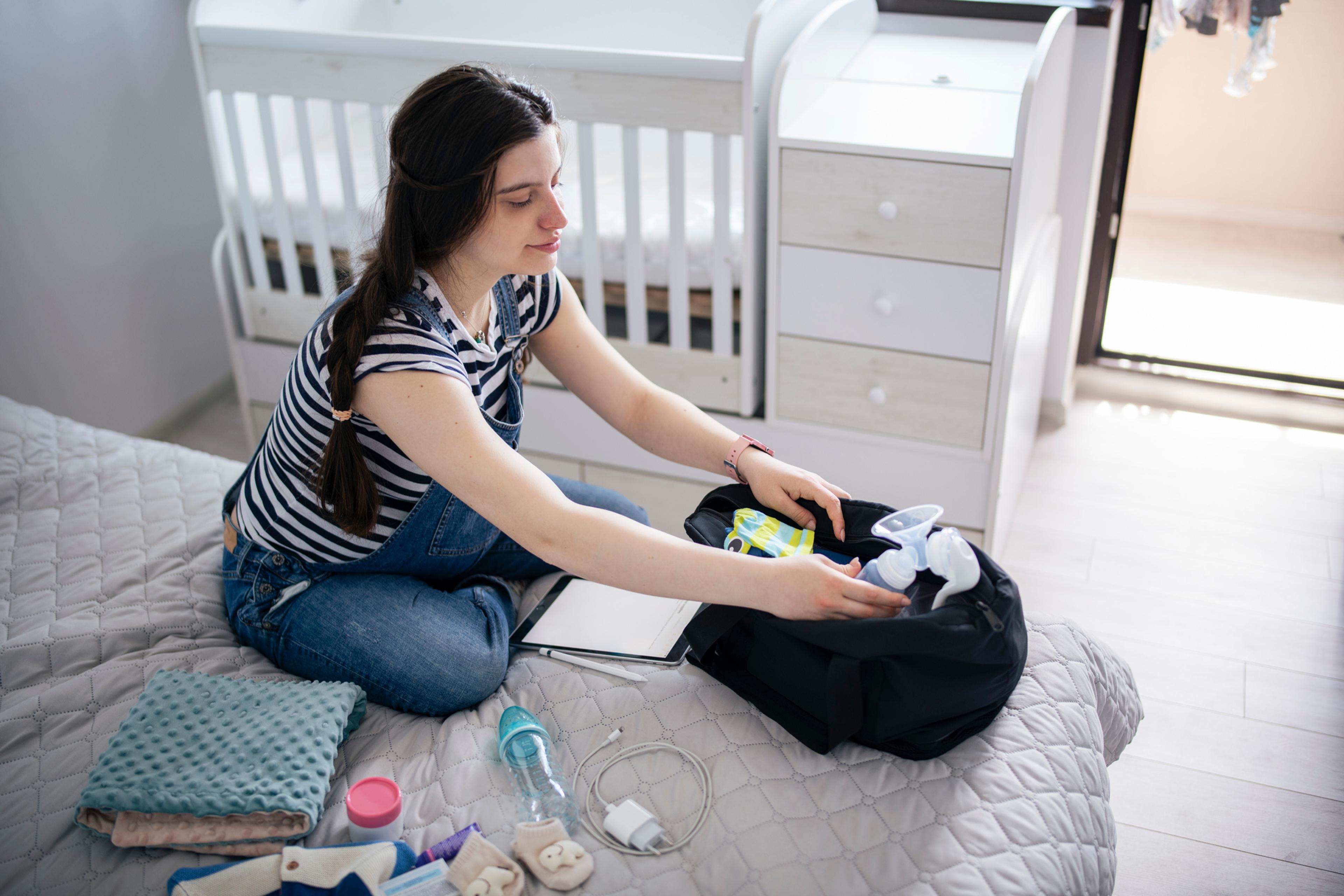Navigating Common Childhood Illnesses: A Parent’s Guide to Your Choices for Care
bcbsm
| 5 min read

From the moment you have a baby, there is plenty to worry about. Whether it’s your first child or your third, navigating their illnesses and understanding where to take them for care can be both tricky and scary. It’s no wonder why, in a moment of worry, you might want to rush your child to the emergency room. But you have choices when it’s not a true emergency and your primary care doctor isn’t available – no appointments needed.
285,000 Blue Cross Blue Shield of Michigan emergency room visits were potentially avoidable in 2017.1
Blue Cross members can know exactly where to take their child for care when common illnesses strike with the help of this guide. It’s intended for parents with children of all ages, to help them manage common illnesses in the best possible way, saving themselves worry, time and money. For the Common Cold or Flu The 2017-2018 flu season was one of the worst on record, leading to 172 pediatric deaths, so it’s important to seek help when you notice symptoms. Before you do, it’s helpful to know whether it’s the flu or the common cold. Here are the differences:
- Cold – gradual symptoms, sneezing, sore throat, stuffy nose, coughing
- Flu – abrupt symptoms, fever, aches, chills, fatigue, slight cough, headache
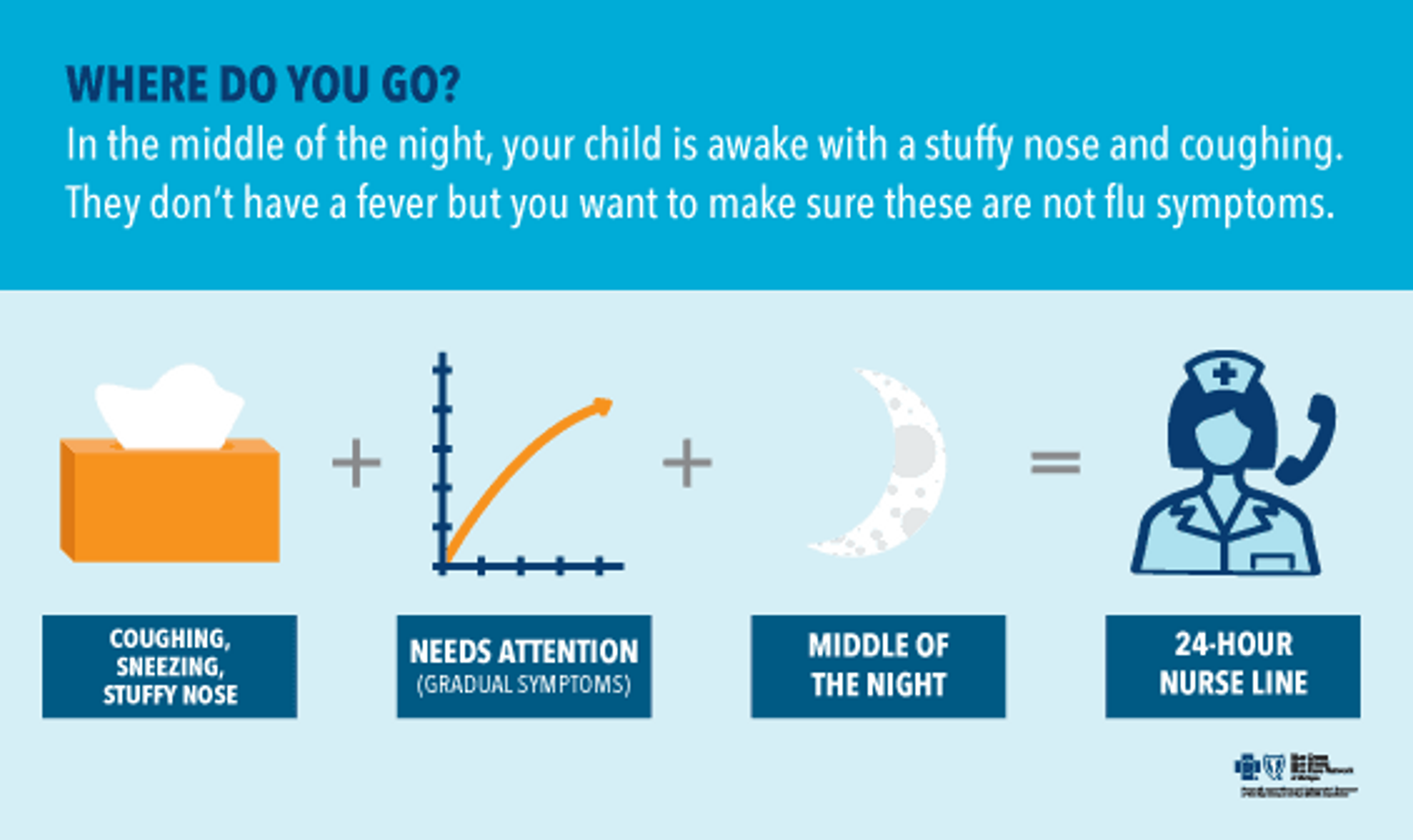
Although on paper cold and flu symptoms can seem very different, in person it may not be as easy to define. This is where the 24-Hour Nurse Line can help. If your child’s symptoms are worsening gradually and you want to make sure it isn’t the flu, dialing up the 24-Hour Nurse Line no matter what time of night can put your mind at ease.
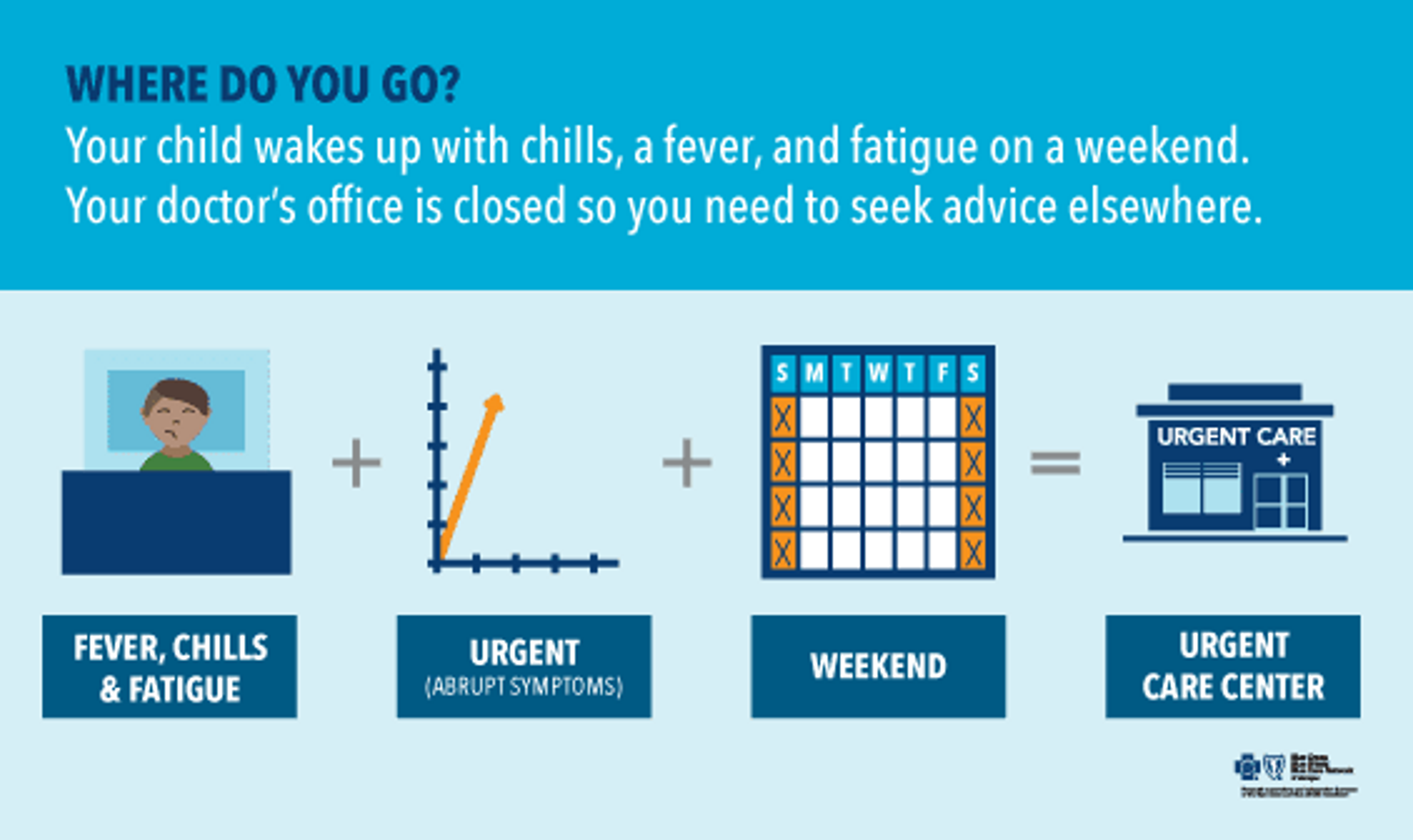
In this case, with the abrupt symptoms and weekend timeframe, you may immediately think about going to the emergency room. But an urgent care center may be a better choice to get the care your child needs. With extended evening and weekend hours, an urgent care center can provide the proper diagnosis through testing and provide treatment options. For Pink Eye Pink eye – or conjunctivitis – is contagious until either symptoms are no longer present or it’s been 24 hours since starting antibiotics. Symptoms typically include burning, itchy eyes that discharge a thick, sticky mucus or pus – which can cause blurring of vision and tears. However, even with this description, it can be hard to tell if your child is rubbing their eye just because they got something in it or if it’s more serious.
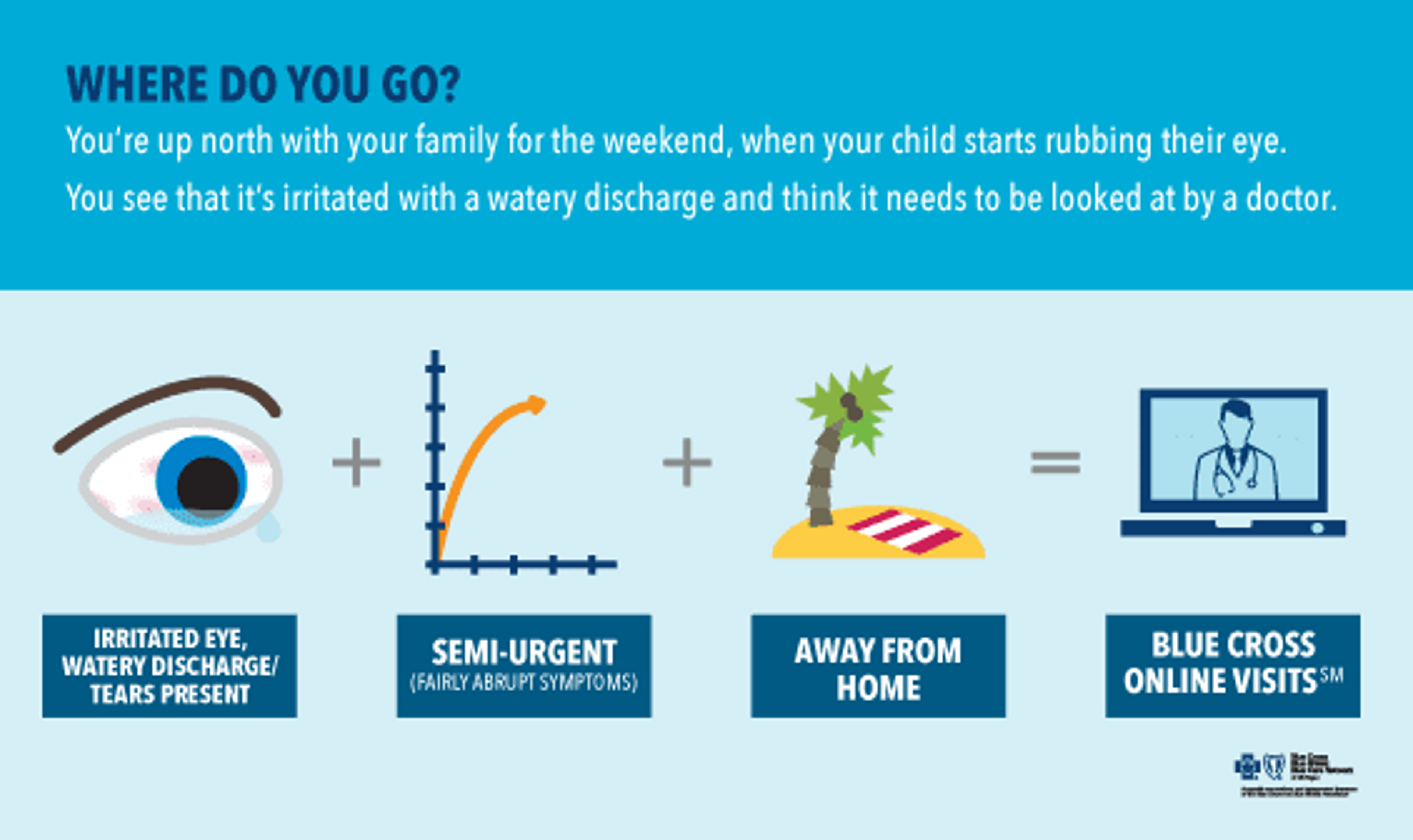
It’s always more nerve-wracking when your child gets sick while you’re away from home. When you’re on the road, try Blue Cross Online VisitsSM and talk with a U.S. board-certified doctor from your phone or computer. Download the BCBSM Online VisitsSM app or visit bcbsmonlinevisits.com to access to a large group of U.S. board-certified professionals who are prepared to review your child’s symptoms over a secure, web-based video chat and provide you with treatment options. Prescriptions may be also available, if appropriate.
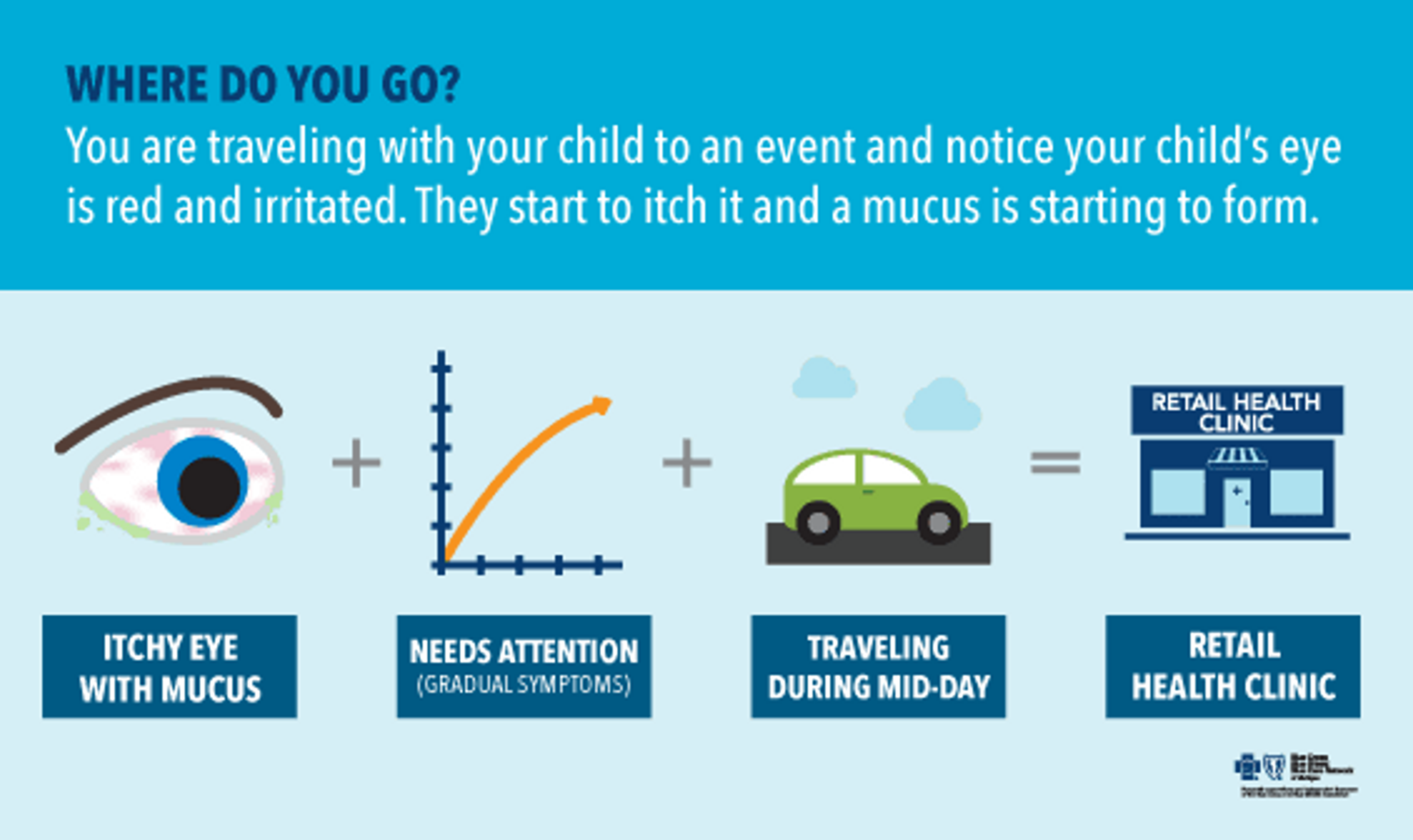
Sometimes you may notice signs of an illness during the most inconvenient times, like when you’re on your way to an event. You may not be too worried, but you still want to ensure nothing serious is going on. This is where a local retail health clinic can be helpful. These clinics are often found in chain drug stores. By stopping along your way, you can talk with a medical professional in a private clinic, usually near the pharmacy, for your child’s current symptoms. For an Earache Five out of six children experience an ear infection by the time they are three years old. With those odds, you’ll want to be prepared in case an earache strikes. Keep in mind that earaches cause a sharp, sudden pain or a dull, continuous pain in the ear with muffled hearing. You may notice your child tugging at their ear, not sleeping well and experiencing ear drainage or a fever.
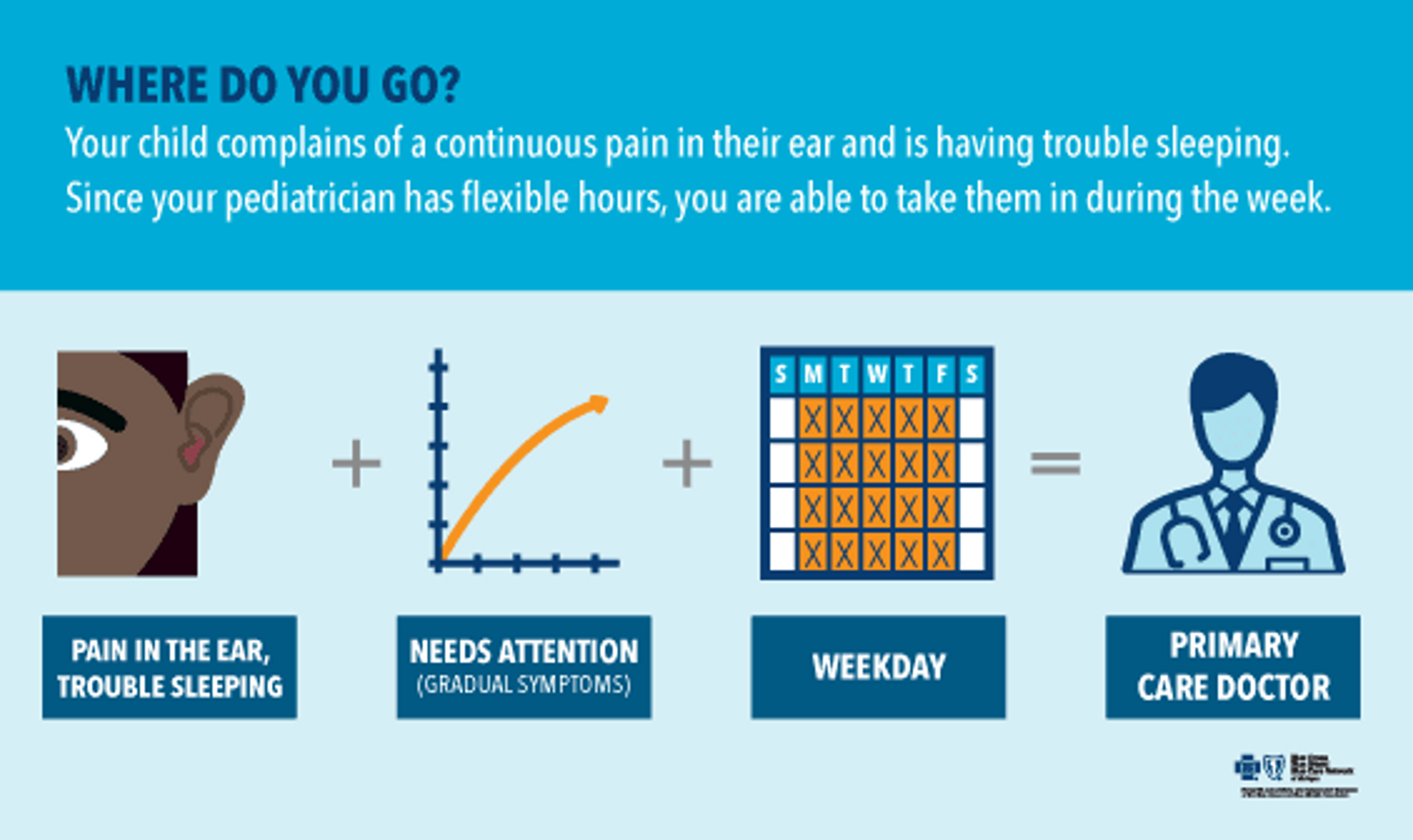
A primary care doctor, such as a pediatrician, provides personalized, in-person care and is someone who knows your child’s medical history and who you and your child trust. An additional perk of your pediatrician’s office is that it may have flexible hours to accommodate your work schedule and your child’s school hours. During your visit, the pediatrician can prescribe the necessary medication to treat your child’s earache and recommend follow-up care options, if needed.
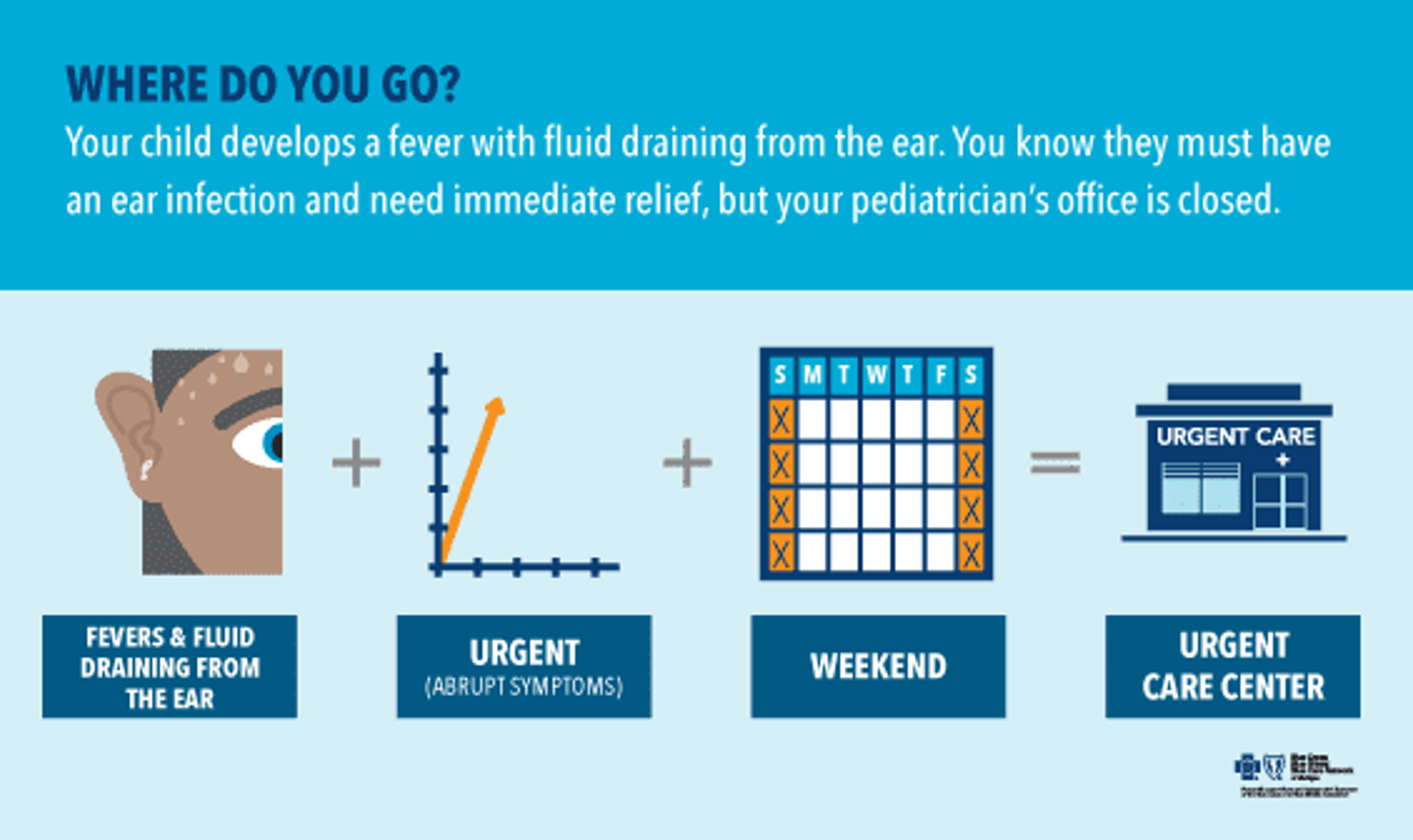
When your pediatrician’s office is closed and you need immediate attention for a non-emergency situation, an urgent care center can provide the necessary in-person interaction. Medical experts at urgent care centers are able to perform tests and provide treatment options without the long wait of an emergency room. With extended hours at night or on the weekend, an urgent care can be a good choice for treating your child’s symptoms. In times when you are uncertain of your child’s symptoms, this guide can be a helpful resource in choosing where to go for care. Learn more about your choices when it’s not an emergency at bcbsm.com/findcare. If you found this post helpful, you might also be interested in:
- 5 Advantages of Using Blue Cross Online Visits (MIBP)
- Primary Care Physicians: Defining What Matters Most To You (MIBP)
- Finding Relief: Who to Talk to When Allergies Strike (AHM)
Be prepared ahead of time. Download the BCBSM Online Visits app on iTunes or Google Play today. 1Blue Cross Blue Shield of Michigan Health Care Value – 2017 Emergency Room Use Analysis; July 10, 2018 Photo credit: Photographee.eu



